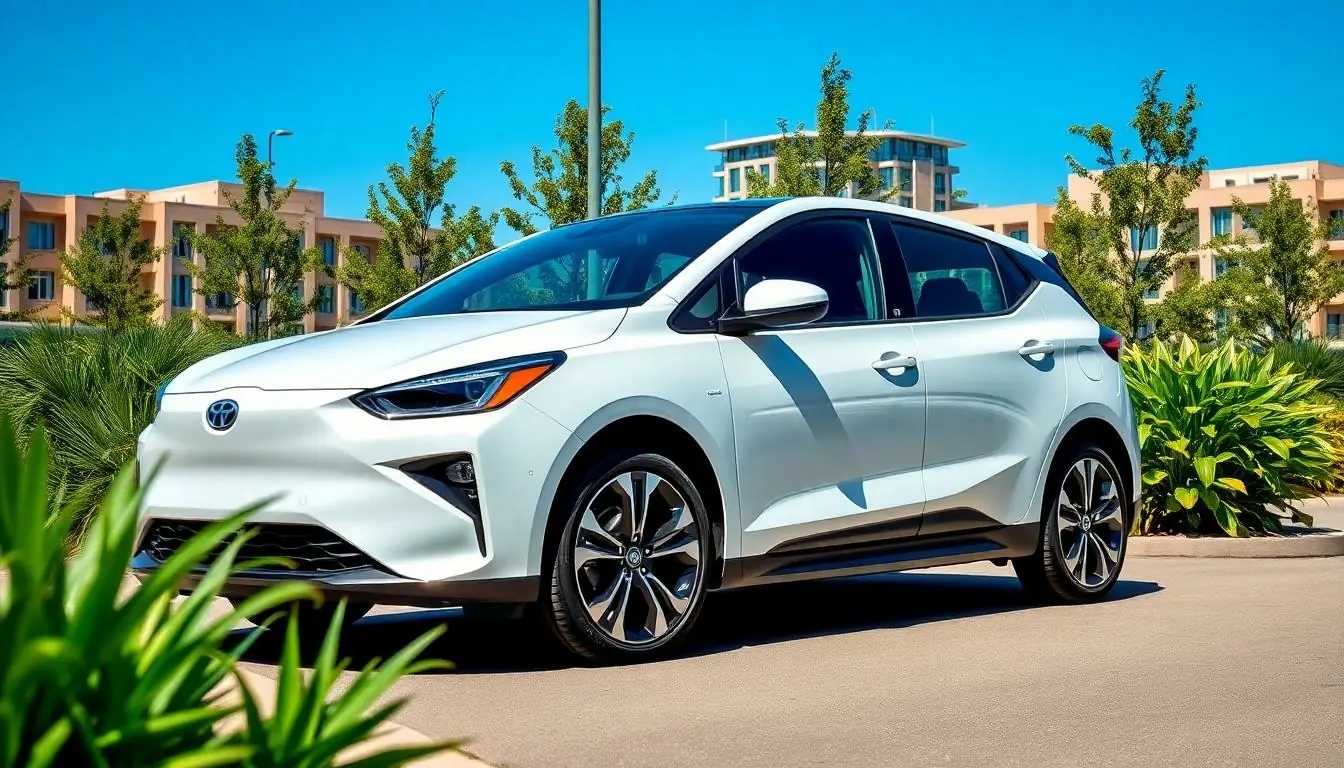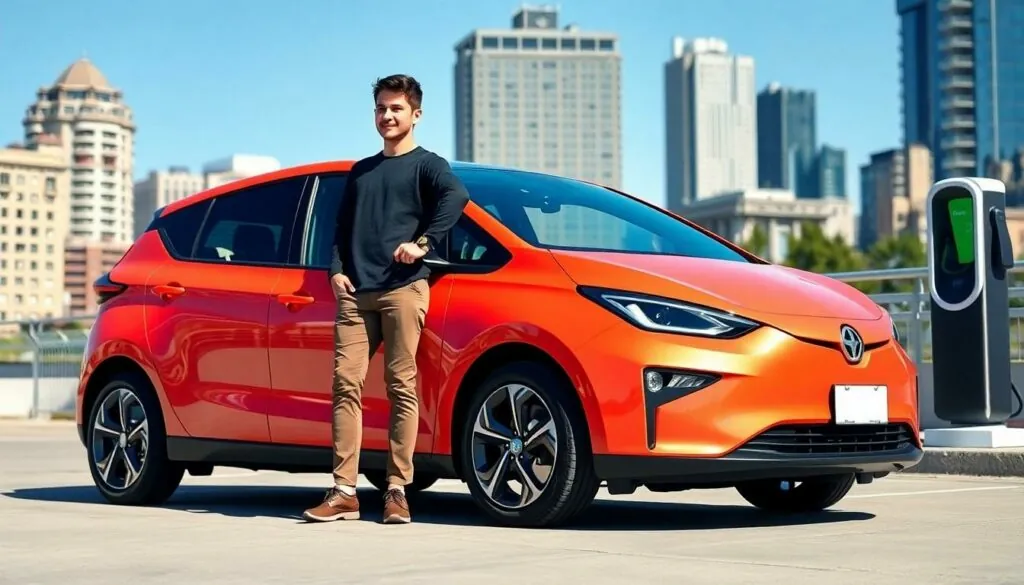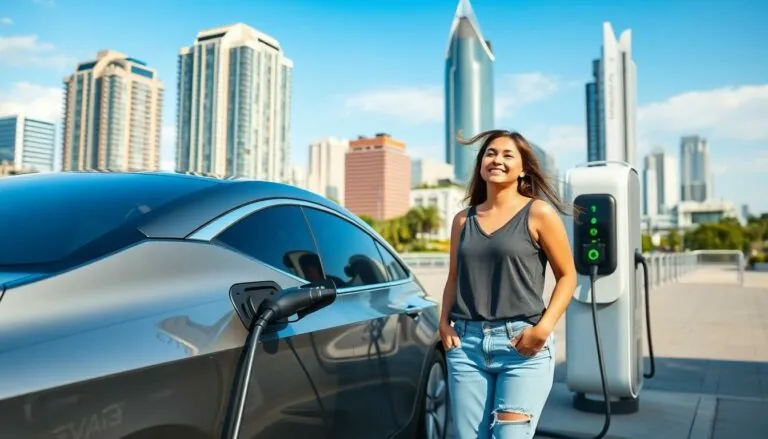Table of Contents
ToggleIn a world where gas prices are higher than a giraffe on stilts, electric hatchbacks are zooming in to save the day—and your wallet. These compact wonders aren’t just about saving the planet; they’re about turning heads while doing it. With sleek designs and tech-savvy features, they make traditional gas guzzlers look like dinosaurs in a world of electric evolution.
Overview of Electric Hatchback Vehicles
Electric hatchback vehicles represent a significant shift in the automotive market. These cars combine compact design with advanced electric technology, appealing to environmentally conscious drivers. They provide an eco-friendly driving experience, reducing greenhouse gas emissions compared to traditional gas-powered vehicles.
Charging infrastructure has expanded rapidly, making electric hatchbacks more convenient for daily use. Many drivers appreciate the ease of charging at home or using public charging stations. Furthermore, advancements in battery technology enhance range and performance, allowing drivers to travel longer distances.
Different models cater to various consumer needs. Popular options include the Tesla Model 3, the Nissan Leaf, and the Hyundai Kona Electric. Each of these vehicles offers unique features, from infotainment systems to safety technologies, attracting a diverse audience.
Cost savings play a critical role in the appeal of electric hatchbacks. Lower fuel and maintenance costs contribute to overall savings for drivers. Incentives, including tax credits and rebates, further sweeten the deal, making these vehicles more accessible to a wider market.
Safety ratings often surpass those of conventional vehicles. Many electric hatchbacks come equipped with advanced safety features, such as automatic emergency braking and lane-keeping assist. As consumer demand for safer, more efficient options continues to rise, manufacturers are likely to invest further in these technologies.
Electric hatchbacks symbolize the future of transportation. Their combination of sustainability, innovation, and practicality positions them as significant players in the automotive landscape. Embracing electric vehicles not only benefits consumers but also supports broader environmental goals.
Benefits of Electric Hatchback Vehicles

Electric hatchback vehicles offer numerous advantages that make them appealing to modern drivers. Not only do they provide eco-friendly solutions, but they also promote economic benefits.
Environmental Advantages
Electric hatchbacks significantly reduce harmful emissions, contributing to cleaner air and a healthier environment. These vehicles often feature energy-efficient designs that minimize energy consumption. Regenerative braking systems in electric hatchbacks recover energy during deceleration, enhancing efficiency. Replacing traditional gas engines with electric powertrains lowers the carbon footprint associated with transportation. Overall, driving an electric hatchback aligns with sustainability goals and supports initiatives aimed at combating climate change.
Cost Savings
Lower fuel costs serve as a major draw for electric hatchback owners. Charging an electric vehicle typically costs less than filling a gas tank, resulting in substantial long-term savings. Maintenance expenses also decrease, as electric engines require fewer services than conventional engines. Tax incentives, such as rebates, can further enhance affordability for buyers. Overall, these financial benefits make electric hatchbacks an attractive option for budget-conscious drivers seeking economical and sustainable alternatives.
Popular Models on the Market
Electric hatchback vehicles gain traction as environmentally friendly alternatives. Various models stand out, capturing consumer interest through innovative features and appealing designs.
Model A Overview
The Tesla Model 3 stands as a leading electric hatchback. Known for its impressive range, it offers approximately 358 miles on a single charge, making it suitable for long drives. Acceleration from 0 to 60 mph occurs in just 3.1 seconds, showcasing its performance capabilities. Advanced Autopilot features enhance safety, allowing for semi-autonomous driving. Interior space allows for comfort while maintaining a stylish design. Purchasing the Model 3 often qualifies drivers for tax incentives, further increasing its appeal.
Model B Overview
The Nissan Leaf represents another popular choice in the electric hatchback market. With a driving range of up to 226 miles, it caters to everyday commutes and weekend trips. It’s equipped with Nissan’s ProPILOT Assist technology, providing drivers with additional safety and convenience features. The Leaf’s spacious cabin offers ample room for passengers and cargo, ensuring practicality. Emphasizing affordability, its starting price typically falls below $30,000. Owners appreciate its user-friendly interface and reliable performance in various driving conditions.
Performance and Features
Electric hatchbacks deliver exceptional performance characterized by advanced technology and energy efficiency. Their design and engineering prioritize both driving range and user convenience.
Battery Life and Charging
Battery life varies among models, with some offering more than 350 miles on a single charge. Tesla Model 3 leads with approximately 358 miles, while Nissan Leaf provides a robust range of up to 226 miles. Charging times differ based on power sources; using a DC fast charger can replenish batteries to 80% in about 30 minutes. Owners also enjoy the option of home charging, typically taking around 8 to 12 hours with a standard outlet. This flexibility in charging enhances overall usability, appealing to both urban and suburban drivers.
Technology and Safety Features
Electric hatchbacks integrate cutting-edge technology, enhancing driver experience. Systems like Tesla’s Autopilot provide semi-autonomous driving capabilities. Nissan Leaf includes ProPILOT Assist, aiding in lane navigation and adaptive cruise control. Safety ratings for these vehicles are often higher than those for traditional models, leading to enhanced consumer trust. Features such as automatic emergency braking, collision warning, and lane departure alerts are standard, reflecting a prioritization of passenger safety. Advanced driver assistance technologies foster confidence, especially for new drivers transitioning to electric vehicles.
Consumer Considerations
Purchasing an electric hatchback involves multiple factors that consumers should evaluate carefully.
Price Range
Electric hatchbacks typically range from $30,000 to $60,000, with variations depending on features and performance. The Nissan Leaf represents budget-friendly options, starting below $30,000, while the Tesla Model 3, known for its extensive range and technology, can reach above $50,000. Incentives such as tax credits and rebates can significantly lower the effective purchase price, often depending on local or state programs. This price spectrum appeals to a variety of budgets, making electric hatchbacks accessible to a broader audience.
Maintenance and Repairs
Maintenance costs for electric hatchbacks usually remain lower than traditional gas vehicles. Battery life, generally ranging from 8 to 15 years, reduces the frequency of major repairs. Routine maintenance often includes tire rotations and brake fluid replacement, minimizing expenses associated with oil changes or exhaust repairs. Many manufacturers provide warranties that cover battery performance for 8 years or 100,000 miles, ensuring peace of mind for owners. Advanced technology also contributes to lower wear and tear, enhancing overall durability. These factors combined make electric hatchbacks an economically sound choice for many consumers.
Electric hatchbacks represent a significant shift in the automotive landscape. Their blend of sustainability and advanced technology meets the growing demand for eco-friendly transportation. With an expanding charging infrastructure and impressive range capabilities, these vehicles are becoming increasingly accessible and practical for everyday drivers.
The financial incentives and cost savings further enhance their attractiveness, making them a smart choice for budget-conscious consumers. As manufacturers continue to innovate, the future looks bright for electric hatchbacks, promising a cleaner and more efficient way to navigate the roads. Embracing this new era of transportation not only benefits individual drivers but also contributes to a healthier planet for generations to come.




